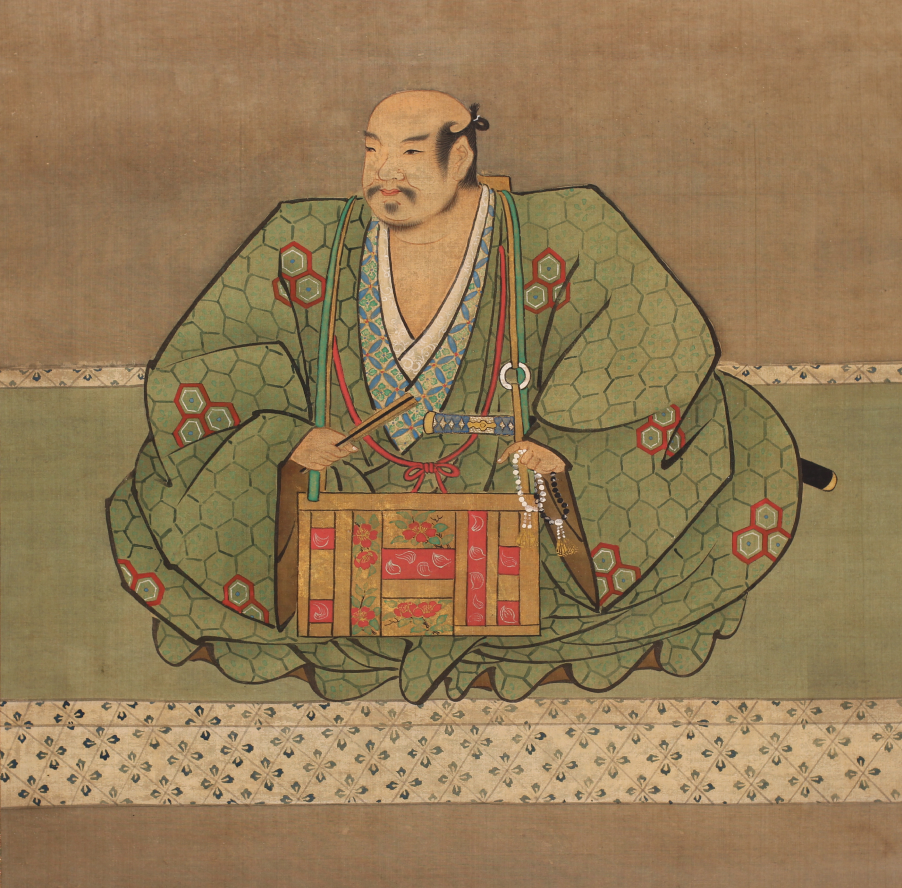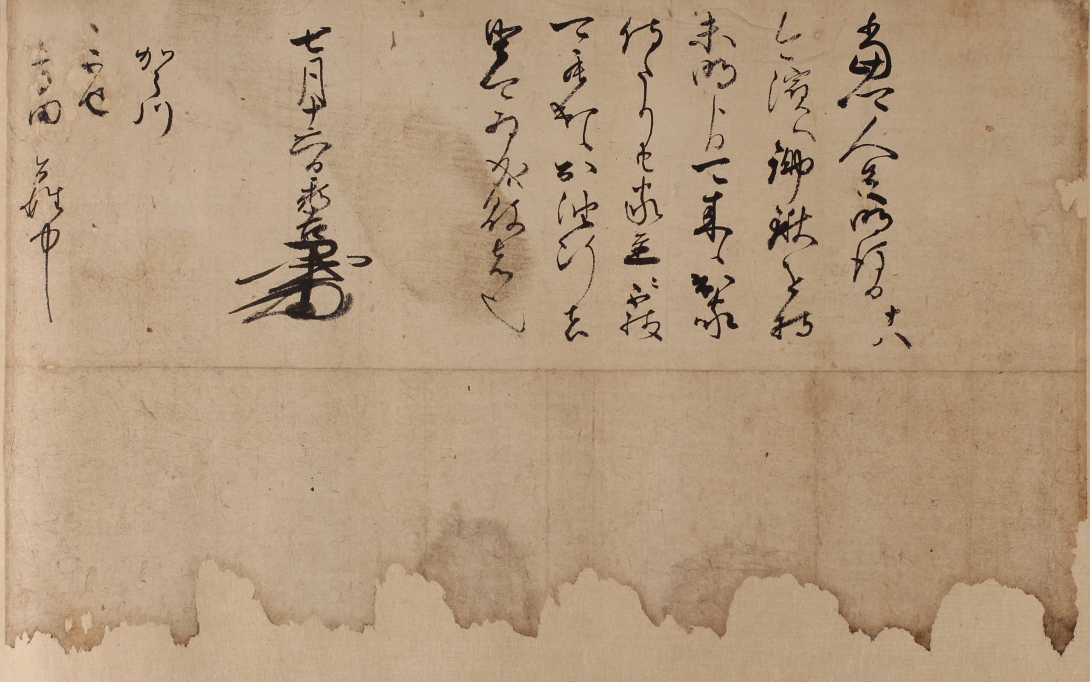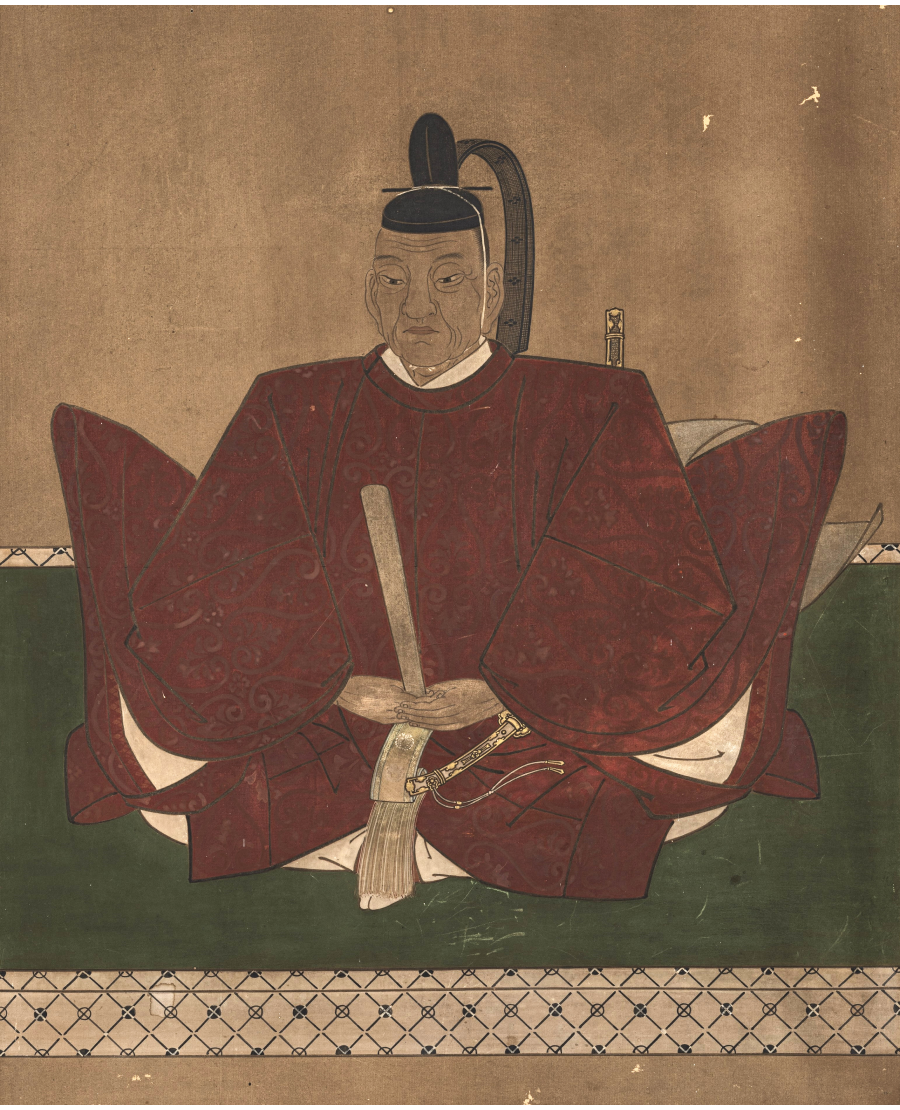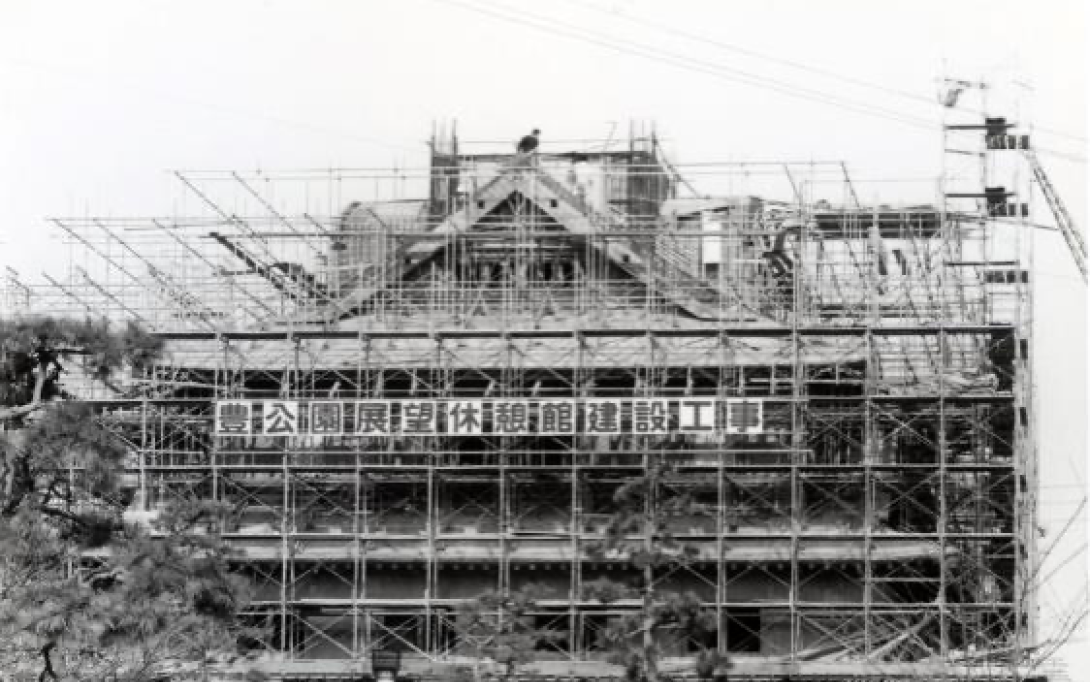Brief History of Nagahama Castle
Nagahama before Hideyoshi
The Nagahama Castle History Museum stands on the actual ruins of Nagahama Castle (designated as a historical site by Nagahama City). The castle was built by Hashiba Hideyoshi (later Toyotomi Hideyoshi, 1537-98). The Nagahama area was originally called "Imahama". Imahama Castle was built as their residence by the Kyogoku clan, which ruled Northern Omi (Northern Shiga Prefecture) at the beginning of the Warring States Period (1467-1603).
The Azai clan replaced the Kyogoku clan as the rulers of Northern Omi during the Warring States Period. From their residence at Odani Castle, the Azai ruled this region for three generations. Azai Nagamasa (1546-73), the third head of the Azai clan, formed an alliance with Oda Nobunaga (1534-82) and married Nobunaga's sister, Ichi. However, he later turned against Nobunaga and waged a struggle against him for three years.
Hideyoshi was a general in the Oda army who played an active role in the battle between Nagamasa and Nobunaga. In September 1573, when his army was defeated, Nagamasa committed suicide at Odani Castle and the Azai clan fell. Hideyoshi, recognized for his war efforts, was given Odani Castle and most of the Azai's territory, rising to become a feudal lord endowed with his own castle.
The Azai clan replaced the Kyogoku clan as the rulers of Northern Omi during the Warring States Period. From their residence at Odani Castle, the Azai ruled this region for three generations. Azai Nagamasa (1546-73), the third head of the Azai clan, formed an alliance with Oda Nobunaga (1534-82) and married Nobunaga's sister, Ichi. However, he later turned against Nobunaga and waged a struggle against him for three years.
Hideyoshi was a general in the Oda army who played an active role in the battle between Nagamasa and Nobunaga. In September 1573, when his army was defeated, Nagamasa committed suicide at Odani Castle and the Azai clan fell. Hideyoshi, recognized for his war efforts, was given Odani Castle and most of the Azai's territory, rising to become a feudal lord endowed with his own castle.

Portrait of Azai Nagamasa (partial image) From the Collection of the Nagahama Castle History Museum
Hideyoshi's Construction of Nagahama Castle
The following year, having realized that Imahama was an important transportation hub within the country, Hideyoshi began building a new castle along the shore of Lake Biwa. According to a historical document of the time, Hideyoshi prepared for the construction of the castle by gathering some of the residents of the territory to the planned site and transporting lumber to the site that Nagamasa had left in Chikubushima.

This is Hashiba Hideyoshi's official letter, with his seal, addressed to the peasants of Karakawa, Fuse, and Takada, issuing an order for residents of the territory to gather together.
From the Collection of the Nagahama Castle History Museum
From the Collection of the Nagahama Castle History Museum
The following year, having realized that Imahama was an important transportation hub within the country, Hideyoshi began building a new castle along the shore of Lake Biwa. According to a historical document of the time, Hideyoshi prepared for the construction of the castle by gathering some of the residents of the territory to the planned site and transporting lumber to the site that Nagamasa had left in Chikubushima.
In the fall of 1574, after the castle was completed, Hideyoshi changed the name of the place from Imahama to Nagahama. He moved from his former residence in Odani Castle to the new castle, along with his family, and remained there until 1582. Nagahama Castle, which Hideyoshi built on the shore of Lake Biwa, was a mizujiro (water castle) located on the waterfront, and it is known that the donjon and palace were located within the main enclosure. Hideyoshi, during his period as the lord of Nagahama Castle, waged war from Nagahama, serving at the vanguard of the Oda Army.

Reconstruction of Nagahama Castle and the Castle Town (Illustration: Yoichi Sasaki)
After Nobunaga's death during the Honnoji Incident in 1582, the Kiyosu Conference was held to determine Nobunaga's successor. Nagahama Castle was taken over by Shibata Katsutoyo ( -1583), a nephew of Shibata Katsuie (1522-83). However, as early as November of the same year, Hideyoshi accepted the surrender of Katsutoyo and he reclaimed Nagahama Castle, to use it as a base for the Battle of Shizugatake, which he fought against Katsuie.
Nagahama Castle – the final years
Later, Yamauchi Katsutoyo (1545-1605), who had served Hideyoshi ever since he became the lord of Nagahama Castle, became lord of the castle, himself. After the Battle of Sekigahara, Naito Nobunari (1545-1612), who had served Tokugawa Ieyasu, and his son Naito Nobumasa (1568-1626) took over the castle. When the Toyotomi clan fell after Hideyoshi's death, Nagahama Castle was demolished without a trace, and much of the construction materials, including the stone used to make the walls, was used to build Hikone Castle. It is said that materials from Nagahama Castle were used for the kitchen gate of Daitsuji Temple and the front gate of Chizen-in Temple, which are still standing in present-day Nagahama, as well as to make the Hikone Castle Tenbin Turret.

Portrait of Naito Nobunari
From the Collection of Fujimoto Shrine
From the Collection of Fujimoto Shrine
Rebuilding the Castle as a museum
Many mountain temples were built in the northern part of Shiga Prefecture, home to such steep and deep mountains as Mt. Ibuki and Mt. Kodakami. Buddhist culture flourished in Nagahama under the influence of Enryakuji Temple, the main temple of the Tendai sect of Buddhism. There are still many valuable Buddhist statues of great age in Nagahama City. Especially in the former Ika-gun area, many statues of Kannon (the Goddess of Mercy) were created, and such old Kannon statues have been preserved by local residents. Therefore, this area is known as "Kannon no Sato" (Kannon Village). In Nagahama, where there are many Jodo Shinshu temples, the Jodo Shinshu faith is also still closely connected to the contemporary life and culture of the local people.

Construction of the Nagahama Castle History Museum
From the Edo period (1603-1867) to the Meiji period (1868-1912), the site of Nagahama Castle was used as a rice field. In 1909, a plan was made to develop the site into a park called "Hou Park". In 1978, another project was proposed: to build a museum of history and folklore in Hou Park. The populace donated large sums of money to the project and expressed their desire for a castle-type museum that would be suitable for construction on the ruins of the former castle. Construction of the museum began in 1981, and it opened in 1983, fulfilling the people’s wish for a castle-type museum of history.
